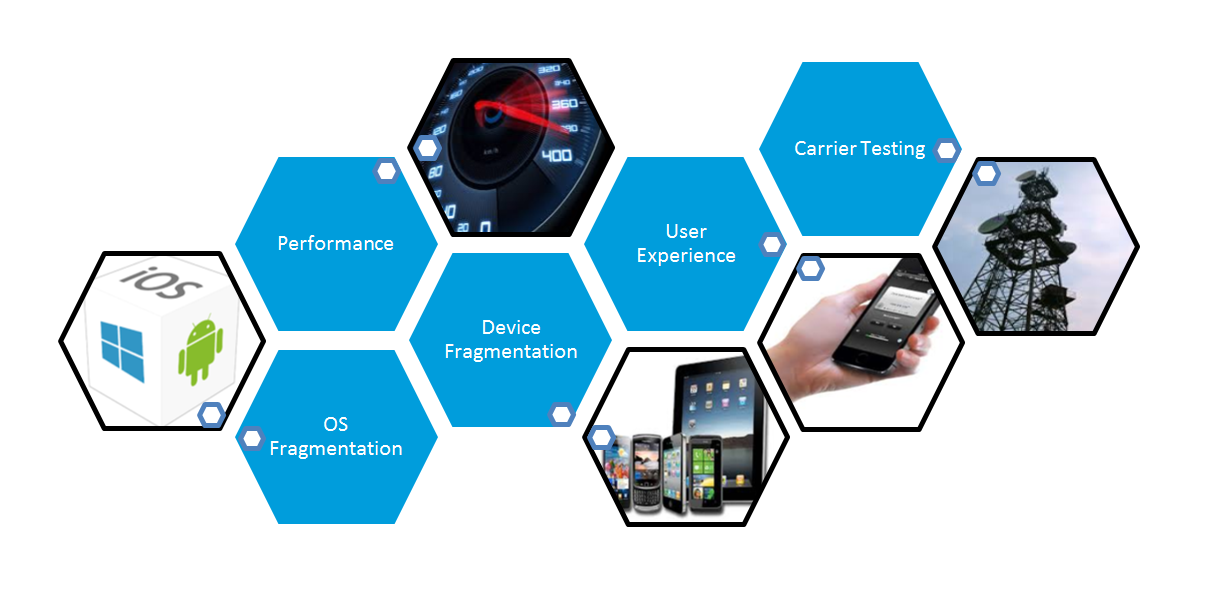At first, testing a mobile app may not feel to be veritably different from testing a conventional desktop app.
Mobile and desktop apps are frequently written in the same languages and hosted on the same servers.
They must also meet the same introductory user's prospects in areas like lading speed and availability. For this reason, companies use mobile app testing tools.
But when you dive into the details, you realise that mobile apps are unnaturally different beasts from desktop apps – and that, by extension, mobile testing requires a unique approach. You can’t simply take a software testing strategy that works for desktop apps and graft it onto your mobile apps.
Advanced Stakes for Mobile Testing
It’s a stylish practice to strive to deliver the most stylish possible experience to all users, whether they're on a desktop or not. But the reality is that poor user experience in mobile apps tends to have a further negative impact on a company’s brand. For this you must be check your internet speed by speed test tool.
The reason why is that it’s easy for users to punctuate poor app performance by giving apps low conditions or leaving negative commentary in commerce. They can’t do these effects for utmost desktop apps, because, unlike mobile apps, utmost desktop apps aren't downloaded through centralized commerce with users-standing features.
This difference doesn’t make mobile testing more technically grueling, and to be clear, I’m not saying you can scrimp on desktop testing because users will abandon your desktop apps if they don’t work as they should, but it does increase the stakes of perfecting a testing strategy. Businesses simply have further to lose, reputationally speaking, from delivering perambulator apps than they do from low-quality desktop apps.
Unique Mobile Availability Conditions
Availability testing, which ensures that availability features like the capability to increase textbook size function duly, is important for delivering a great experience to all users, whether they pierce apps using desktops or mobile bias.
But with mobile bias, availability testing is harder, because there's further room for error when enforcing availability features. For case, the lower screen sizes of bias – and the lesser variation in average screen size – could mean that an increase in textbook size will beget the app to render some textbooks off the screen. Or, a “ darkness mode ” point on a screen could affect in lower- than- anticipated discrepancy between textbooks and backgrounds, causing availability challenges for some users. This highlights the significance of mobile app testing tools.
A mobile testing strategy needs to be suitable to accommodate pitfalls like these, which aren’t as pronounced for desktop apps.
Mobile Configuration Variability
Maybe the biggest difference between mobile and desktop testing is that with mobile apps, masterminds have an important wider set of possible configurations to contend with.
In the desktop world, there are just two main operating systems – Windows and macOS – and a fairly small number of zilches performances for each family. And although there are numerous types of PCs and laptops, they all conform to the same introductory tackle norms.
In discrepancy, there are over,000 distinct types of Android mobile bias out there – to say nothing of iOS bias, which adds to the diversity of tackle. There's also a wider selection of mobile operating systems and performances.
What this means for QA brigades is that there are numerous further variables to test for with mobile bias. It also means testing must be more effective so that masterminds can test for as numerous implicit configurations as possible without delaying software release cycles.
Conclusion
After viewing the discussion above, it can be concluded that mobile apps play a significant role in our work, home, and leisure time. Everything is done via mobile apps these days. Therefore, mobile app testing tools are adopted by companies to ensure quality.
















